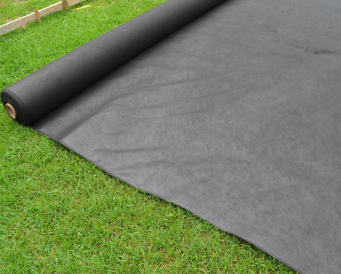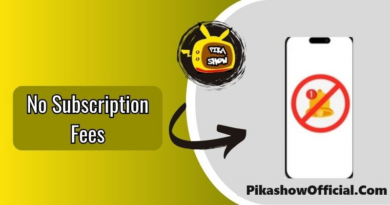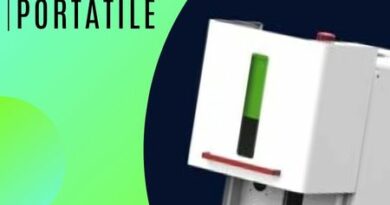How PP Woven Fabric is Made: The Manufacturing Process Explained
Polypropylene (PP) woven fabric is one of the most versatile and widely used materials in industries such as packaging, agriculture, construction, and textiles. Known for its durability, flexibility, and cost-effectiveness, this fabric is essential for manufacturing PP woven bags, geotextiles, tarpaulins, and industrial sacks.
But how is PP woven fabric made? What goes into its production, and why is it preferred over other materials? In this comprehensive guide, we’ll explore the step-by-step manufacturing process of PP woven fabric, from raw material selection to the final product.
1. What is PP Woven Fabric?
Definition
PP woven fabric is a strong, lightweight textile made from interwoven polypropylene (PP) strips. It has a grid-like structure, providing high tear resistance, flexibility, and breathability.
Key Characteristics of PP Woven Fabric
✔ High tensile strength – Withstands heavy loads and rough handling.
✔ Lightweight – Easy to transport and use.
✔ Moisture-resistant – Protects goods from humidity and contamination.
✔ Recyclable – Can be reused, making it an eco-friendly option.
✔ Chemical-resistant – Resistant to most acids and alkalis.
PP woven fabric is extensively used for packaging bulk goods, making it a preferred choice in agriculture, logistics, and construction industries.
2. The Step-by-Step Manufacturing Process of PP Woven Fabric
The production of PP woven fabric involves several stages, each crucial for ensuring the fabric’s strength, flexibility, and durability.
Step 1: Raw Material Selection – Polypropylene Granules
The process begins with polypropylene (PP) granules, a thermoplastic polymer derived from petroleum. These granules are chosen based on their quality, strength, and flexibility to produce high-performance woven fabric.
Step 2: Extrusion – Converting PP Granules into Filaments
✔ The PP granules are fed into an extruder machine, where they are heated and melted at temperatures around 200–250°C.
✔ The molten PP is then passed through a flat die to form thin plastic films.
✔ These films are stretched and slit into fine tapes, which serve as the base material for weaving.
The stretching process is crucial as it improves the tensile strength of the material, making it resistant to tearing and breakage.
Step 3: Tape Winding – Preparing for Weaving
✔ The stretched PP tapes are then wound onto large spools or bobbins.
✔ These spools are stored for weaving, ensuring a continuous and efficient production flow.
This stage ensures uniform tape thickness, which is essential for producing consistent fabric quality.
Step 4: Weaving – Converting Tapes into Fabric
The weaving process gives PP woven fabric its strength and durability.
✔ The PP tapes are fed into circular or flat weaving looms, where they are woven into a crisscross pattern.
✔ The interwoven structure provides tear resistance and durability.
✔ The density of weaving (measured in GSM – Grams per Square Meter) determines the thickness and strength of the fabric.
This stage creates the basic woven fabric, which can be used for further applications like bag making, lamination, or coating.
Step 5: Lamination or Coating (Optional)
In some applications, PP woven fabric is laminated or coated for added strength, waterproofing, and printability.
✔ A thin layer of polyethylene (PE) or BOPP film is applied to the woven fabric.
✔ This enhances water resistance, durability, and aesthetics.
✔ Laminated PP woven fabric is commonly used for fertilizer bags, cement bags, and food packaging.
Lamination also allows for custom printing, making the fabric more suitable for branding and marketing purposes.
Step 6: Cutting and Stitching
Once the PP woven fabric is produced, it is cut into required sizes for different applications.
✔ The fabric is cut using automated cutting machines.
✔ If used for bag production, the fabric pieces are stitched and reinforced.
✔ Heat-sealing or ultrasonic sealing may be used for better durability.
This stage ensures the fabric is prepared for end-use, whether in bag making, construction sheets, or industrial packaging.
Step 7: Printing and Customization
For commercial applications, logos, designs, or product details are printed on the fabric.
✔ Printing is done using rotogravure or flexographic printing techniques.
✔ Multi-color printing options enhance the fabric’s appearance and branding impact.
Printed PP woven fabric is widely used in retail shopping bags, cement bags, and agricultural sacks.
Step 8: Quality Control and Inspection
Before the final product reaches the market, it undergoes strict quality control measures.
✔ Strength testing ensures the fabric can handle heavy loads.
✔ Tensile tests check the stretching and durability of the material.
✔ Water and chemical resistance tests confirm the fabric’s protective properties.
Manufacturers ensure that the fabric meets ISO, ASTM, and other international quality standards.
Step 9: Packaging and Distribution
Once tested and approved, the PP woven fabric is rolled or packed into bales for shipment.
✔ It is transported to industries such as agriculture, packaging, and construction.
✔ PP woven fabric is available in various colors, sizes, and finishes based on customer requirements.
Manufacturers offer custom solutions, making PP woven fabric a highly adaptable material for multiple industries.
3. Applications of PP Woven Fabric
PP woven fabric is used in various industries due to its strength, affordability, and recyclability.
1. Packaging Industry
✔ Used in PP woven bags, FIBC bulk bags, and shopping bags.
✔ Commonly used for fertilizers, grains, cement, and pet food packaging.
2. Agriculture and Farming
✔ PP woven sheets help with mulching and soil protection.
✔ Used in shade nets, crop covers, and greenhouse applications.
3. Construction and Geotextiles
✔ Provides reinforcement in road construction and erosion control.
✔ Used in sandbags, waterproof sheets, and fencing applications.
4. Retail and Promotional Bags
✔ Reusable shopping bags made from laminated PP woven fabric.
✔ Custom-printed packaging for branding and promotions.
PP woven fabric is a cost-effective and environmentally friendly choice for businesses worldwide.
4. Advantages of PP Woven Fabric
✔ Strong and Durable – Resistant to wear, tear, and extreme conditions.
✔ Waterproof and Moisture-Resistant – Protects products from humidity and contamination.
✔ Eco-Friendly and Recyclable – Can be reused multiple times, reducing waste.
✔ Affordable and Cost-Effective – Cheaper than traditional fabric or paper-based packaging.
✔ Customizable – Available in various sizes, colors, and printing options.
Due to these advantages, PP woven fabric remains one of the most preferred materials in industrial and commercial sectors.
Conclusion
The production of PP woven fabric is a meticulous process that involves extrusion, weaving, lamination, and finishing to create a versatile and durable material. Used in packaging, agriculture, construction, and retail, it plays a crucial role in modern industries.
Its strength, lightweight nature, and recyclability make it an eco-friendly alternative to single-use plastics, contributing to sustainable manufacturing practices.
As global industries move toward efficient and environmentally responsible materials, PP woven fabric continues to be a reliable and cost-effective solution.




